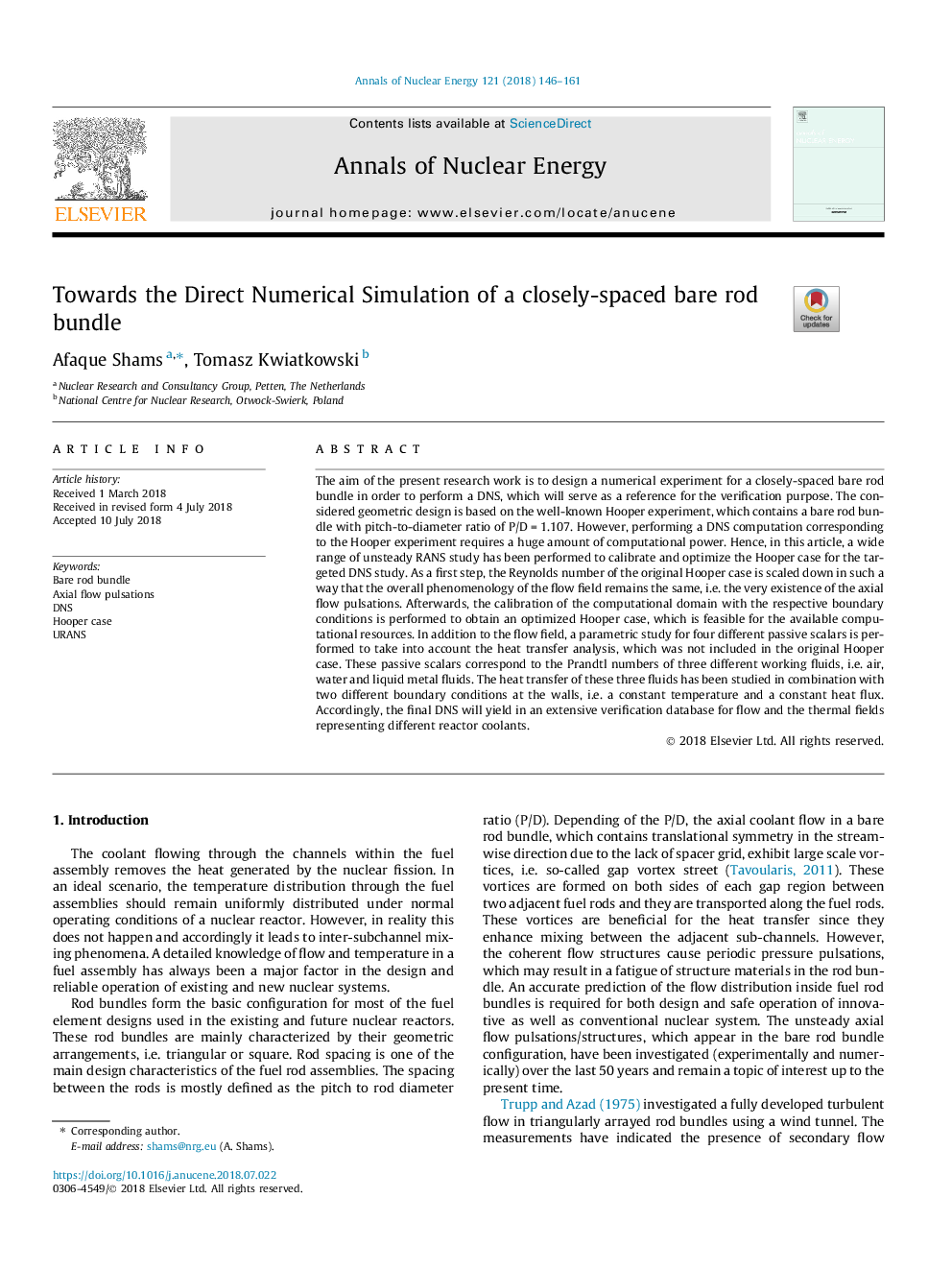| Article ID | Journal | Published Year | Pages | File Type |
|---|---|---|---|---|
| 11007318 | Annals of Nuclear Energy | 2018 | 16 Pages |
Abstract
The aim of the present research work is to design a numerical experiment for a closely-spaced bare rod bundle in order to perform a DNS, which will serve as a reference for the verification purpose. The considered geometric design is based on the well-known Hooper experiment, which contains a bare rod bundle with pitch-to-diameter ratio of P/Dâ¯=â¯1.107. However, performing a DNS computation corresponding to the Hooper experiment requires a huge amount of computational power. Hence, in this article, a wide range of unsteady RANS study has been performed to calibrate and optimize the Hooper case for the targeted DNS study. As a first step, the Reynolds number of the original Hooper case is scaled down in such a way that the overall phenomenology of the flow field remains the same, i.e. the very existence of the axial flow pulsations. Afterwards, the calibration of the computational domain with the respective boundary conditions is performed to obtain an optimized Hooper case, which is feasible for the available computational resources. In addition to the flow field, a parametric study for four different passive scalars is performed to take into account the heat transfer analysis, which was not included in the original Hooper case. These passive scalars correspond to the Prandtl numbers of three different working fluids, i.e. air, water and liquid metal fluids. The heat transfer of these three fluids has been studied in combination with two different boundary conditions at the walls, i.e. a constant temperature and a constant heat flux. Accordingly, the final DNS will yield in an extensive verification database for flow and the thermal fields representing different reactor coolants.
Related Topics
Physical Sciences and Engineering
Energy
Energy Engineering and Power Technology
Authors
Afaque Shams, Tomasz Kwiatkowski,
